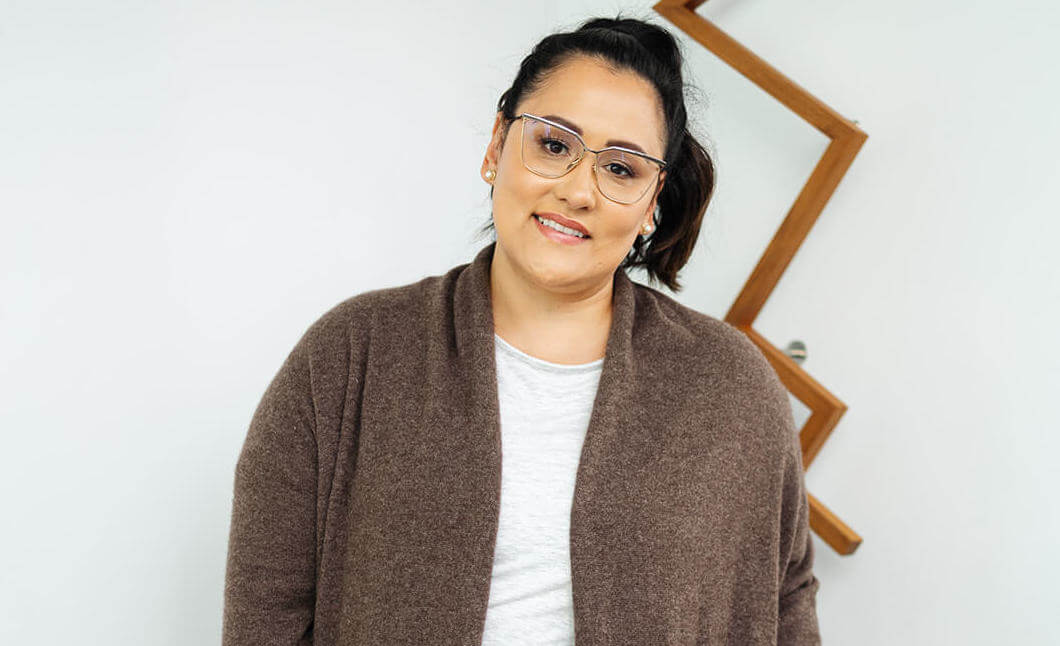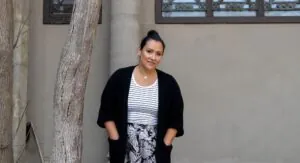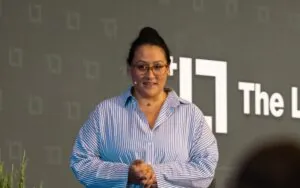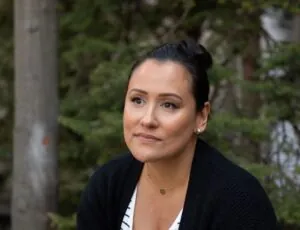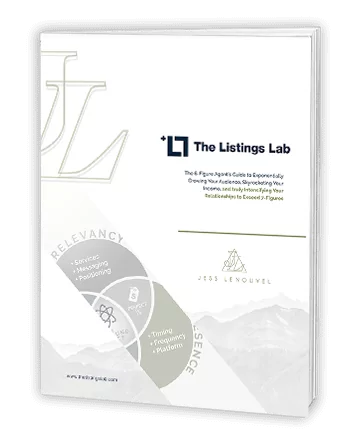Want to know a winning framework for how to close real estate deals every single time?
You’re in the right place.
A lot of agents tend to overcomplicate sales. But in reality, sales is simply connecting the right person with the right solution.
Jess sat down with world-class entrepreneur and legendary high-ticket sales expert, Erica Martin, to discuss the 8 steps you need to get an easy “yes” during your next listing presentation.
Let’s get into it, shall we?
1. Warm-up
The very first step of your real estate listing presentation, or as I like to call it – your listing conversation (because it should really be a 2-way street!) is your warm-up.
If you want to close more real estate deals, making your prospect feel at ease is key.
Your warm-up is all about breaking the ice. Think typical small talk.
Ask how they’re doing, how their day was, how whatever thing they had going on recently went.
The key here is to know who you’re talking to. How well do you know your ideal client avatar?
That way, you can personalize the warmup phase. If you’ve already interacted with your prospect, you should have some familiarity with who they are as a person.
In Erica’s words “People will break contracts. But they won’t break relationships.”
If you can get to know your potential clients on a personal level, it sets a solid foundation for the rest of the listing conversation.
Depending on how long your listing presentation lasts, the warmup phase can last anywhere from 5-10 minutes.
2. Setting expectations
From a psychological perspective, people always like to know what’s coming. Especially when sales are involved.
Setting expectations is the step that so many agents forget when trying to close real estate deals.
You have to set the agenda and give a walkthrough of how the conversation will go.
When you do this correctly, you immediately put your prospect at ease.
You want to detail the structure of the conversation as well as let them know what will happen at the end if it turns out you’re a good fit to work together.
So often, we’re nervous about sales or we’re really hungry to get the listing – and so we shy away from being “sales-y”.
But if you don’t tell them upfront that you will be presenting an offer…it can often feel like a bait and switch at the end.
Your listing presentation script might go a little something like this:
| Agent: Is it okay if I set some expectations with you about how this listing presentation is going to go?
Prospect: Yes, sure. Agent: First, before I get into my presentation, I really want to find out more about you and what your goals are, and where your head’s at on this. So is it okay if I just ask you a bunch of questions to get to know you a little bit better? Prospect: Of course. Agent: Okay, wonderful. And then once I get a good picture of your vision, then I’ll talk about methodology and how we can get there together. |
Once you get a ‘yes’ after this part, you can move on to step three of the sales framework for how to close real estate deals.
3. The Promise
The promise is a key component to closing more real estate sales.
For one thing, it saves you if you’re talking to somebody that’s not qualified for your offer.
Delivering the promise part of the sales framework might sound something like this.
“I want you to understand something about how I do business. I promise you that if I can help you with this and I feel 100% confident I can get you results, we’re going to partner up to get this listing on the market and achieve your goals.
But on the flip side, I’m a really straight shooter. So if anything comes up where I don’t think that I am the right person to help you, I will not waste your time. I will let you know right away if I’m not the best person to list your home, and if I can, point you in the right direction.”
The promise takes the pressure off of your prospect. It allows them to be more present and open with you during the conversation.
AND it makes sure you don’t waste either party’s time if a lead isn’t qualified for your offer.
An example of someone who wouldn’t qualify might be someone who wants to list their house for 50% over what you believe their house will sell for.
When you let the client know you’re selective and only work with people who are the best fit for your offer, the power dynamic switches.
Instead of the seller sitting on their throne thinking, “You’re here to fight for my listing” – you’re able to change the dynamic… and communicate that the conversation is actually a 2-way vetting process.
In a moment, you’re able to convey the message that you don’t work with just anyone.
4. Qualify
Learning how to qualify during a listing presentation is key to signing clients who are a perfect fit for you.
As stated above, knowing what your potential client wants to list their home for is going to be a big part of the vetting process.
An old-school listing presentation will walk someone through a CRM and then at the end tell them what their suggested price would be.
In my opinion, that’s not the right way to do it.
Instead, you should be getting their expectations right from the beginning. This way, you’re able to handle all of the objections that may come up between the first initial time they share that number with you and when you give your suggested pricing.
There needs to be some objection handling, especially if those two numbers are different.
Two ways to qualify prospects would be:
- Timeframe
- Expectations
For timeframe, you need to understand: is this person setting up conversions for a move their planning next month, or in two years?
For expectations, you want to know what’s driving their move. People never move because it’s fun. People move because there’s something in their current situation that they want to change.
5. Personal Questions
In step five, you want to start asking personal questions to confirm that their expectations are in line with your offer.
A key part of this step is making sure you have all the important decision-makers present for the listing conversation.
I’m sure we’ve all been in a situation where you’re meeting with someone and then at the very end of the conversation they tell you, “Ok, well I need to talk with my dad”.
It can be a huge issue because the primary decision maker wasn’t in attendance, and now you’re relying on someone ELSE to present your methodology. It’s much tougher to close a deal without any of the psychological buildup, without any of the proper positioning.
If you were in this position, your best bet would be to reschedule the conversation for a time when you have all decision-makers present.
Once you’ve asked questions about their timelines and expectations and have gathered all of the decision-makers, it’s time to dig into the emotional reasons why they’re moving.
For example, maybe their family is growing and their house is too small and they’re upsizing.
If this is the case they might be feeling some internal pressure.
Get to the heart of what’s motivating them at a core level.
6. Enroll them in a vision
In old-school sales formulas about how to close sales, there’s a lot of digging the knife into the pain point.
But this framework for how to close real estate sales isn’t about that.
While yes, you do want to unearth their pain points, what’s even more important is building a vision together.
You want to create a vision for them that’s even bigger than what they possibly imagined.
If you give them a new way of looking at things, you’re giving them value before you’re even working together.
The goal is to illuminate the pain point and show them there’s a better way – without it ever feeling icky.
You’re allowing them to see the true reasons why they should be making this move and how well you understand what they’re going through.
At the end of the day, you’re trying to build a deeper connection than all of those other agents who have come in, talked at them for 45 minutes, and then told them that they’ll list for 1%.
When you’re able to build a relationship with a prospect, it’s no longer about being the fastest or cheapest.
This part of the listing presentation is also a great time to share some real estate testimonials and case studies.
You might say something like, “I totally understand where you’re at. You know, you remind me of my clients, Kate and Matthew. They were in the exact same position when we first started working together.”
Showcasing client stories helps give you an element on credibility and shows your prospect they’re not alone.
7. Offer presentation
Once you’re in agreement on the vision, it’s time to present your offer.
You can ask them if they’re ready to hear about how you can achieve that vision together using your proven methodology.
Again, you want to make sure you’re having that back-and-forth communication. In the industry we call this a listing presentation, but it should really be called a listing conversation. You should never be talking at someone.
When you’ve set up the conversation correctly up until this point, presenting your offer should feel seamless.
You’ve created the emotional buildup, and your offer presentation should practically explain how you’ll achieve the results together.
Humans are emotional creatures. We make decisions emotionally first, and then back them up with logic.
Too many agents go on a long sales pitch. When really, the key to closing real estate deals is to set the conversation up the correct way.
As you’re presenting your offer, you want to constantly be receiving their buy-in. Ask them questions to see if things sound good and confirm you’re both still on the same page.
8. Close & congratulate
If at this point, you’re both in agreement, it’s time to hand over the listing agreement and have them fill it out.
After everything is done and sorted is when you get to congratulate them and be excited.
When it comes to closing any kind of sale, but especially something major like a real estate deal, it’s SUPER easy for people to talk themselves out of things down the line.
Which is why you want to come prepared with some sort of agreement, even if it’s just an exclusivity agreement while the house is getting prepped, or some sort of letter of intent.
When people sign something or a proper, solid agreement is made, there’s more commitment from both sides.
It helps things feel solid and locked in rather than tentative.
A key point here is not to get excited before you have a signed agreement. It can almost make your prospect wonder if you’re pulling one over on them.
Instead, maintain a calm, authoritative confidence.
When getting them to sign, make sure you’re clearly explaining each step, what each part covers and where they need to initial or sign.
And when both parties have officially signed, that’s when you’re able to move on to the celebration phase.
Congratulate your client on taking action toward their new chapter in life, and show your enthusiasm for getting to support them through this life transition.
The next time you find yourself stressing over how to close real estate deals, come back to this post.
And make sure you hit every step of the framework for the highest chance of success!
Want to learn more from Erica? Follow her on Instagram here.
And for daily real estate agent business and marketing tips, you can follow me here.
